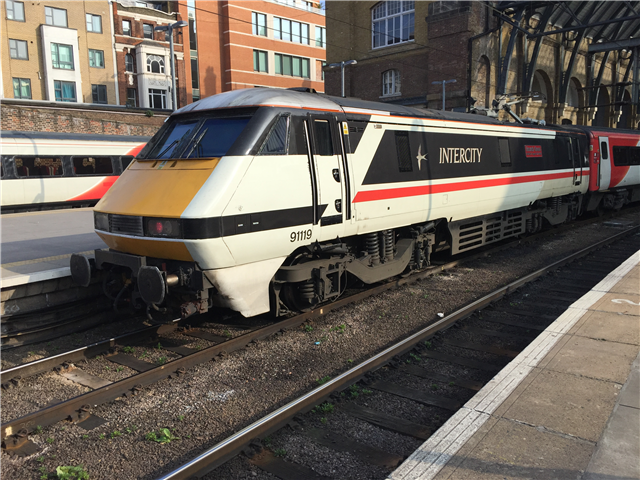The British Rail Class 91 is a high-speed electric locomotive, which produces power of 4,830 kW (6,480 hp); it was ordered as a component of the East Coast Main Line modernisation and electrification programme of the late 1980s.
The Class 91s were given the auxiliary name of InterCity 225 to indicate their envisaged top speed of 225 km/h, they were also referred to as Electras by British Rail during their development and throughout the electrification of the East Coast Main Line.
The other end of the InterCity 225 train set is formed of a Mark 4 Driving Van Trailer, built with a similar body shell to the Class 91 locomotives but with only one driving cab. The locomotive body shells are of all-steel construction. Unusually, the motors are body mounted and drive bogie-mounted gearboxes via cardan shafts; this reduces the unsprung mass and hence track wear at high speeds. The locomotive also features an underslung transformer; therefore, the body is relatively empty compared to contemporary electric locomotives. Much of the engineering specification for the locomotive was derived from the research and operational experience of the APT-P.
31 were built in total. Some locos are still in use; however, several have already been scrapped, many more have been placed in store. Upon retirement, 91110, 91111, and 91131 will be preserved as part of the National Collection, having all been nominated by the Railway Heritage Committee. In June 2021, the '225 Group' was launched; a preservation initiative with the intention of preserving a further Class 91 and an Intercity 225 set. In September 2022, Crewe Heritage Centre received 91120 on long-term loan from Europheonix.
